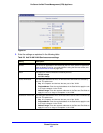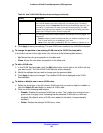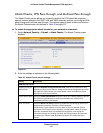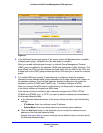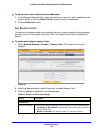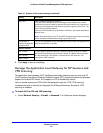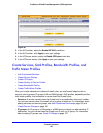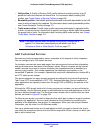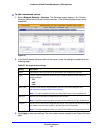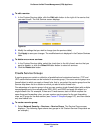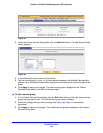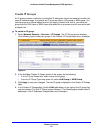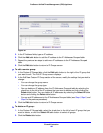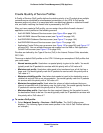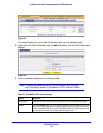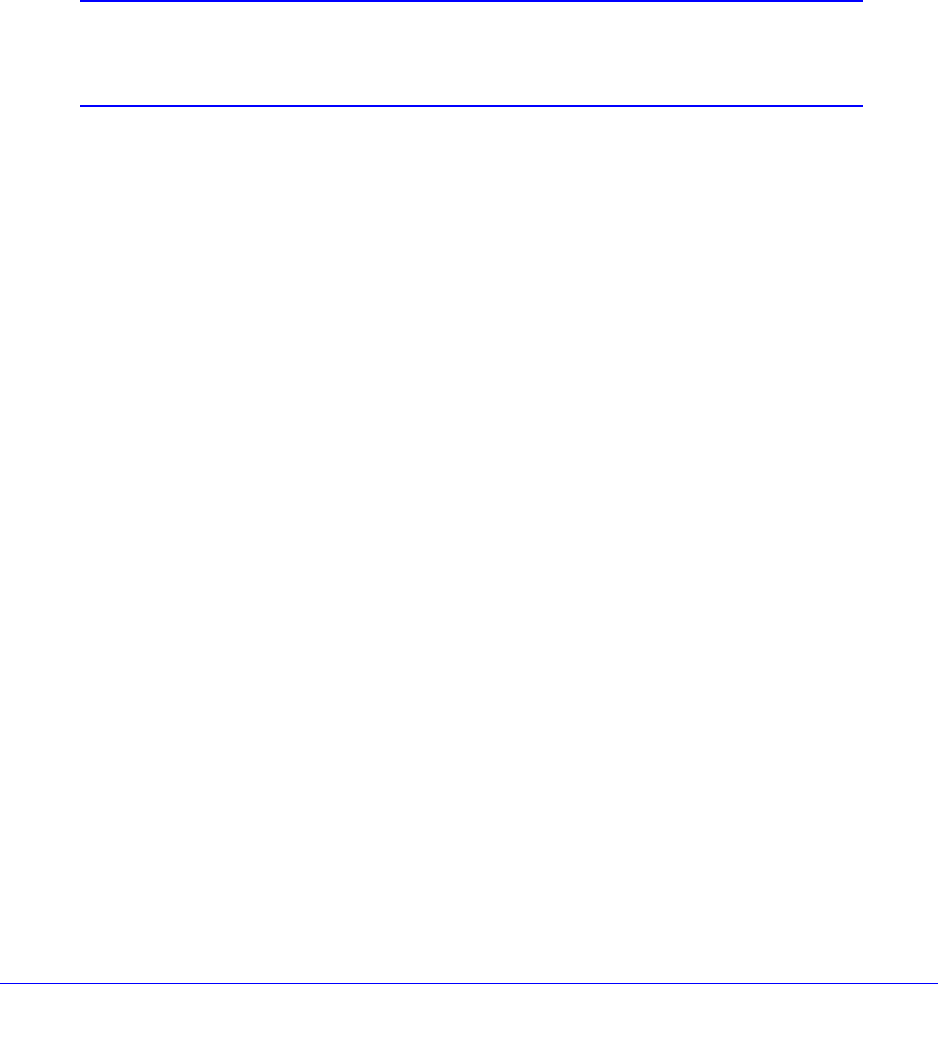
Firewall Protection
163
ProSecure Unified Threat Management (UTM) Appliance
• QoS profiles. A Quality of Service (QoS) profile defines the relative priority of an IP
packet for traffic that matches the firewall rule. For information about creating QoS
profiles, see Create Quality of Service Profiles on page 169.
• Bandwidth profiles. A bandwidth profile allocates and limits traffic bandwidth for the LAN
users to which a firewall rule is applied. For information about creating bandwidth profiles,
see Create Bandwidth Profiles on page 171.
• Traffic meter profiles. A traffic meter profile measures downloaded or uploaded traffic,
or both, for users to which a firewall rule is applied, and logs or blocks traffic that exceeds
the preset limit or limits. For information about creating traffic meter profiles, see Create
Traffic Meter Profiles on page 174.
Note: A schedule narrows down the period during which a firewall rule is
applied. For information about specifying schedules, see Set a
Schedule to Block or Allow Specific Traffic on page 177.
Add Customized Services
Services are functions performed by server computers at the request of client computers.
You can configure up to 125 custom services.
For example, web servers serve web pages, time servers serve time and date information,
and game hosts serve data about other players’ moves. When a computer on the Internet
sends a request for service to a server computer, the requested service is identified by a
service or port number. This number appears as the destination port number in the
transmitted IP packets. For example, a packet that is sent with destination port number 80 is
an HTTP (web server) request.
The service numbers for many common protocols are defined by the Internet Engineering
Task Force (IETF) and published in RFC 1700, Assigned Numbers. Service numbers for
other applications are typically chosen from the range 1024 to 65535 by the authors of the
application.
Although the UTM already holds a list of many service port numbers, you are not limited to
these choices. Use the Services screen to add additional services and applications to the list
for use in defining firewall rules. The Services screen shows a list of services that you have
defined, as shown in Figure 87 on page 164.
To define a new service, you need to determine first which port number or range of numbers
is used by the application. You can usually determine this information by contacting the
publisher of the application, user groups, or newsgroups. When you have the port number
information, you can enter it on the Services screen.
You use a customized service as a firewall object to which you apply a firewall rule, that is,
you select the customized service from the Service drop-down list on a screen on which you
add or edit a firewall rule.



